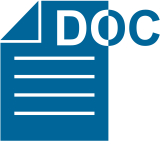PENENTUAN KESAMAAN RESERVOAR SISTEM PANAS BUMI KADIDIA DAN KADIDIA SELATAN KABUPATEN SIGI, PROVINSI SULAWESI TENGAH BERDASARKAN METODA GEOKIMIA
Abstrak
Pembentukan sistem panas bumi di daerah Kadidia dan Kadidia Selatan diperkirakan berhubungan dengan aktivitas tektonik yang masih aktif yaitu pada segmen sesar Palu Koro. Hal ini memungkinkan sistem panas buminya mempunyai manifestasi dan reservoar yang bertemperatur tinggi. Litologi daerah ini didominasi oleh batuan plutonik dengan jenis granit dengan bagian depresinya diisi oleh endapan permukaan. Ditemukannya manifestasi air panas dan tanah panas bertemperatur mendidih di Kadidia Selatan mengindikasikan sistem ini mempunyai temperatur reservoar yang tinggi. Panas yang tinggi ini dipicu oleh aktivitas tektonik yang masih aktif yang memanaskan kembali
batuan granit. Temperatur reservoar daerah Kadidia Selatan diperkirakan 240
C dengan pembentukan fluida panas bumi yang berasal dari pencampuran dengan fluida magmatis. Sedangkan daerah Kadidia yang memiliki temperatur yang lebih rendah, sistem panas bumi ini diperkirakan berhubungan dengan sirkulasi dalam dimana air meteorik terpanaskan oleh batuan panas yang kemudian muncul di permukaan sebagai air panas, dengan temperatur
reservoar daerah Kadidia diperkirakan 130 o C s.d 140 o C. Sistem panas bumi Kadidia dan Kadidia Selatan diperkirakan mempunyai reservoar yang berbeda. Hal ini terlihat dari karakteristik geokimia fluida yang berbeda seperti komposisi unsur-unsur utama, unsur-unsur konservatif, daya hantar listrik, dan isotop. Litologi batuan yang berbeda serta adanya sesar yang membatasi kedua sistem ini juga menegaskan bahwa kedua daerah ini mempunyai reservoar yang berbeda. Namun untuk mengetahui apakah kedua daerah ini mempunyai sistem yang sama atau tidak, belum dapat diketahui karena membutuhkan kajian lebih lanjut.
##plugins.generic.usageStats.downloads##
Referensi
Anonim, 2012. Survey Terpadu Geologi dan Geokimia Daerah Panas
Bumi Kadidia, Kabupaten Sigi, Sulawesi Tengah, Badan Geologi, Bandung (Unpublished report).
Anonim, 2014. Survey Terpadu Geologi dan Geokimia Daerah Panas Bumi Kadidia Selatan,Kabupaten Sigi, Sulawesi Tengah, Badan Geologi, Bandung (Unpublished report).
Fournier, R.O., 1981. Application of Water Geochemistry Geothermal
Exploration and Reservoar Engineering,Geothermal System: Principles and Case Histories. John Willey & Sons.New York.
Giggenbach, W.F., 1988. Geothermal Solute Equilibria Deviation of
Na-K-Mg – Ca Geo- Indicators. Geochemica Acta 52. pp. 2749 – 2765.
Hamilton W., 1979. Tectonic of Indonesia Region, Geol.Surv.Prof.Papers,U.S.Govt .Print Off.,Washington. Herdianita, N.R., dan Julinawati, T., 2007.
Hidrogeokimia Air Panasbumi Daerah Cidanau dan Sekitarnya, Anyer, Provinsi Banten Berdasarkan Manifestasi Permukaannya. Jurnal Geoaplika, Vol 2, No 3, hal. 105 – 119.
Hutchinson,C.S.,1989. Geological Evolution of South-East Asia,Oxford
Mono. Geol. Geoph., 13, Clarendon Press, Oxford
Mahon K. and Ellis, A.J., 1977. Chemistry and Geothermal System. Academic Press Inc. Orlando
Marini, L., 2001. Geochemical Techniques for the Exploration and Exploitation of Geothermal Energy, Dipartimento per lo Studio del Territorio e delle sue Risorse, Università Degli Studi di Genova, Italy.
Nicholson, K., 1993. Geothermal Fluids;Chemistry and Exploration
Techniques, Springer-Verlag, Berlin.
Norman, D.I., and Moore, J.N., 1999.Methane and Excess N2 and Ar
in Geothermal Fluid Inclusions.Twenty-Fourth Workshop on Geothermal Reservoar Engineering, Stanford
University, pp. 196-202. Tamanyu, S. and Sakaguchi, K., 2003.
Conceptual Model For NonVolcanic
Geothermal Resources., European Geothermal Conference.
##submission.copyrightStatement##
##submission.license.cc.by-nc-sa4.footer##Penulis yang naskahnya diterbitkan menyetujui ketentuan sebagai berikut:
Hak publikasi atas semua materi naskah jurnal yang diterbitkan/dipublikasikan dalam situs Buletin Sumber Daya Geologi ini dipegang oleh dewan redaksi dengan sepengetahuan penulis (hak moral tetap milik penulis naskah).
Ketentuan legal formal untuk akses artikel digital jurnal elektronik ini tunduk pada ketentuan lisensi Creative Commons Attribution-ShareAlike (CC BY-SA), yang berarti Buletin Sumber Daya Geologi berhak menyimpan, mengalih media/format-kan, mengelola dalam bentuk pangkalan data (database), merawat, dan mempublikasikan artikel tanpa meminta izin dari Penulis selama tetap mencantumkan nama Penulis sebagai pemilik hak cipta.
Naskah yang diterbitkan/dipublikasikan secara cetak dan elektronik bersifat open access untuk tujuan pendidikan, penelitian, penyelidikan, dan perpustakaan. Selain tujuan tersebut, dewan redaksi tidak bertanggung jawab atas pelanggaran terhadap hukum hak cipta.















